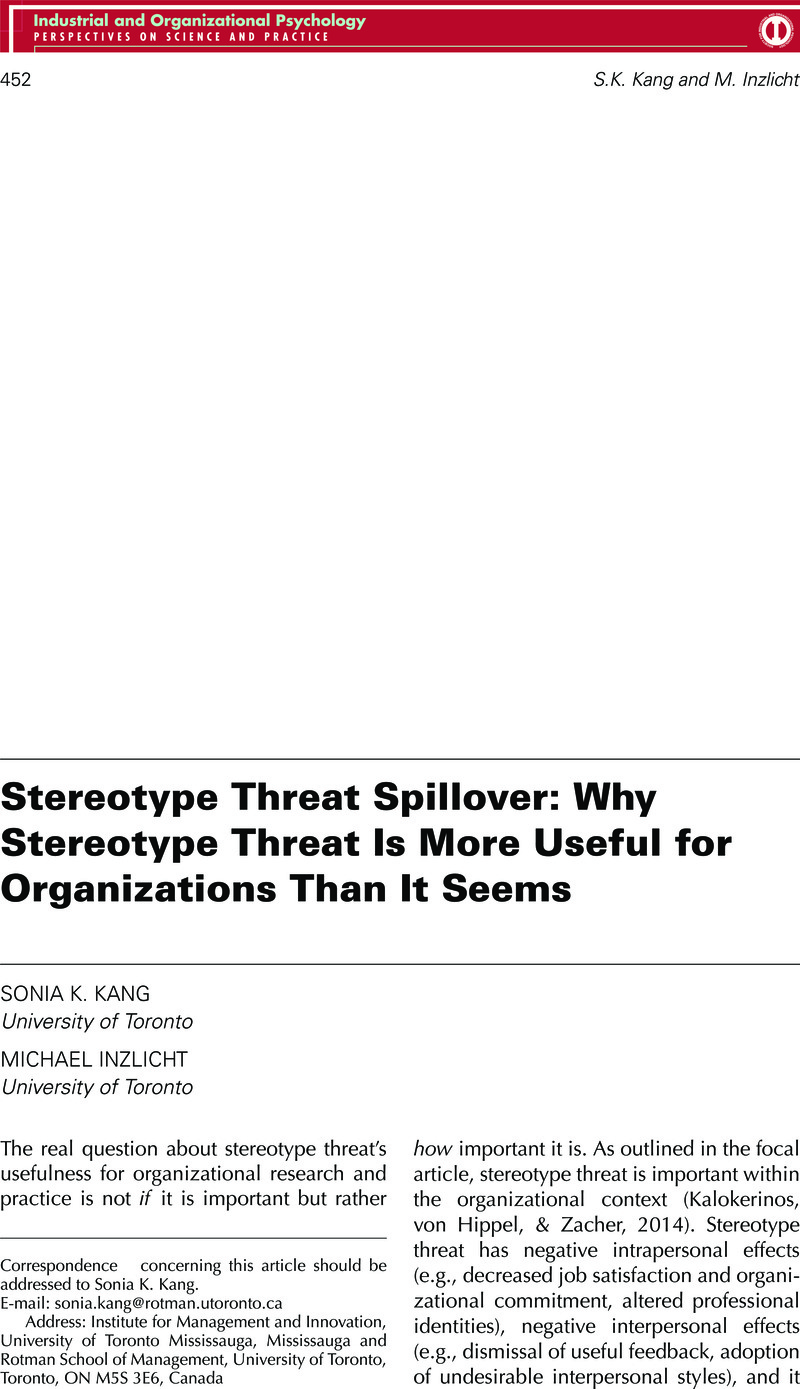Crossref Citations
This article has been cited by the following publications. This list is generated based on data provided by Crossref.
Casad, Bettina J.
and
Bryant, William J.
2016.
Addressing Stereotype Threat is Critical to Diversity and Inclusion in Organizational Psychology.
Frontiers in Psychology,
Vol. 7,
Issue. ,
Kulik, Carol T.
Perera, Sanjeewa
and
Cregan, Christina
2016.
Engage Me: The Mature-Age Worker and Stereotype Threat.
Academy of Management Journal,
Vol. 59,
Issue. 6,
p.
2132.
van Veelen, Ruth
Derks, Belle
and
Endedijk, Maaike Dorine
2019.
Double Trouble: How Being Outnumbered and Negatively Stereotyped Threatens Career Outcomes of Women in STEM.
Frontiers in Psychology,
Vol. 10,
Issue. ,
Mugg, Joshua
2020.
How Not to Deal with the Tragic Dilemma.
Social Epistemology,
Vol. 34,
Issue. 3,
p.
253.
Swab, R. Gabrielle
Javadian, Golshan
Gupta, Vishal K.
and
Pierce, Charles A.
2022.
Stereotype Threat Theory in Organizational Research: Constructive Analysis and Future Research Agenda.
Group & Organization Management,
Vol. 47,
Issue. 3,
p.
530.
Hall, William
Schmader, Toni
Inness, Michelle
and
Croft, Elizabeth
2022.
Climate change: An increase in norms for inclusion predicts greater fit and commitment for women in STEM.
Group Processes & Intergroup Relations,
Vol. 25,
Issue. 7,
p.
1781.
Petitta, Laura
Probst, Tahira M.
Ghezzi, Valerio
Bettac, Erica L.
Lavaysse, Lindsey M.
and
Barbaranelli, Claudio
2024.
Job insecurity and work–family interface as predictors of mental and physical health: The moderating role of family–work stereotype threat.
Journal of Occupational and Organizational Psychology,
Vol. 97,
Issue. 2,
p.
452.





